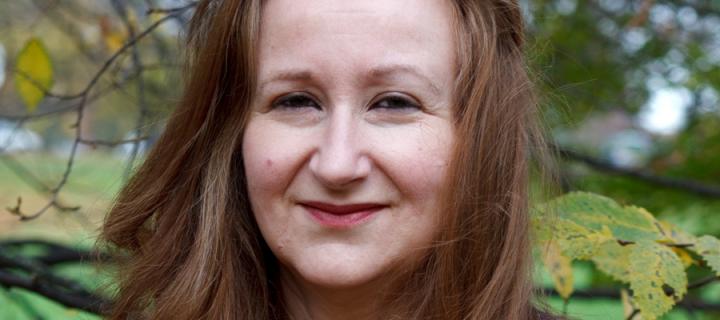Aileen Reid
The modular structure of Aileen Reid's degree led her to courses in the architecture department, the first step in a journey that is now recording the complex evolution of London's built environment.
| Name |
Aileen Reid |
| Degree Course |
History of Art MA Hons |
| Year of Graduation |
1986 |

Your time at the University
I chose Edinburgh for several reasons. The four-year course meant that the introductory portion was spread over two years, allowing for a more thorough grounding that three-year degrees at most English universities, where the introductory portion lasted only a year. The modular structure also allowed me to take courses in the architecture department, as I was particularly interested in the history of architecture – so much so that I now make my living in that field. I was also attracted to the variety of specialist honours years courses.
Of course I looked beyond the university to the city. For someone doing History of Art and who is interested in architecture, Edinburgh offers an unrivalled mix of sheer architectural beauty, and top quality museums and galleries – rivalled only by London, in the UK, and London is not for everyone. For such an important city, Edinburgh is also very liveable, as the centre is very compact and easy to walk around – I liked the way the university was integrated into the city, and not in a campus or student ghetto.
For such an important city, Edinburgh is also very liveable, as the centre is very compact and easy to walk around – I liked the way the university was integrated into the city, and not in a campus or student ghetto.
Tell us about your Experiences since leaving the University
I currently work as a historian on the Survey of London, the official history of London’s streets and buildings, which is now part of the Bartlett School of Architecture, University College London. As historians I and my five colleagues, led by Professor Andrew Saint, use methodologies developed over more than a century, based on detailed primary research in archives and record offices, as well as field survey, to discover the complex evolution of London's built environment. The end result are large, illustrated volumes, topographically organised, with the historic parish as the defining unit for each book or set of books. They are intended to be works of record for a wide range of historians, architects, planners and anyone with an interest in London's social and architectural history. New books are currently published by Yale University Press, and former volumes are available online via the Institute of Historical Research's British History Online website. I have been working there since 2005 – 10 years!
My first job on leaving Edinburgh was as a copyeditor on the multivolume Macmillan/Grove Dictionary of Art editing articles mainly on architecture. My experience doing architectural studies under Dr Malcolm Higgs in the architecture department helped with that. Later I worked as an editor for Bison Books, commissioning and sometimes writing popular illustrated art books. Obviously having a done a degree where essay-writing was the key means of conveying information, helped with that.
For many years after I left Bison (in 1990 I think) I began a PhD at the Courtauld Institute of Art, University of London (PhD 1999) on the architecture of EW Godwin (1833-86). Having been awarded a First in my Edinburgh degree helped greatly as it secured me funding from the British Academy to work on my research. Later I worked as a subeditor and later assistant literary editor on the Sunday Telegraph. I worked there part-time which enabled me to complete my PhD.
The part-time working also enabled me to write or contribute to various books on architectural history which in turn enabled me to get the job I now have, where I am exploring new ways of disseminating historical research, including film. Tomorrow morning I am being interviewed by BBC Radio Bristol about an EW Godwin building that is under threat. I did my first research on Godwin for a dissertation at Edinburgh in 1985-6 for Dr Higgs… so we come full circle.
Alumni wisdom
Get the best degree you can, make connections (they are enriching and you never know when they may come in useful… or you may be useful for them) and do stuff outside and online… it ups your profile and makes you a better person! Take risks… think, what is the worst that can happen? If you mess something up it’s not the end of the world.

